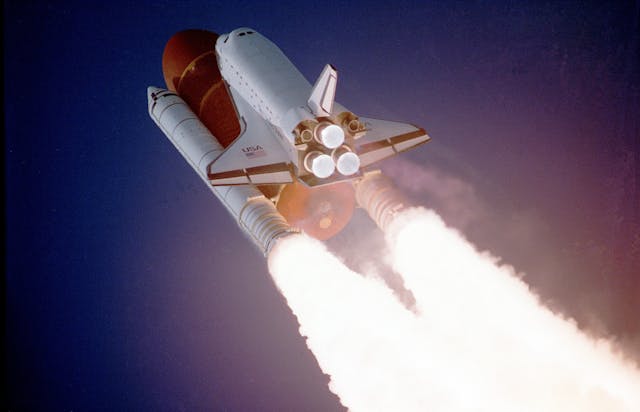
How does a gravitational slingshot work? A gravitational slingshot works by using the gravity of a planet to get an increase in speed without expending extra energy, and to change direction without losing speed.
A gravitational slingshot is technically called a gravity assist because the gravity of the large body is assisting the spaceship. As we know, everything in the universe is affected by gravity and has gravity. The more mass the object has, the more gravity it will have. This is often related to the size of the body in space, but it doesn’t have to be. Neutron stars and black holes have tremendous mass and gravity, but they are relatively tiny. Gravity doesn’t impart any energy, but whenever something fights against gravity to move an object upwards, the energy it uses is imparted to that object as potential energy. If you put a glass on the ground, it is being pulled down by the Earth, but it is on the surface, so it has no potential energy. If you lift the glass onto a chair 50 cm above the Earth’s surface, you have increased its potential energy because you had to add energy to get it up there, fighting against gravity. If you put it on a shelf or on the wall at the very top of a skyscraper, you have increased its potential energy again because of the energy you used to move it. If the glass falls off the wall at the very top of the skyscraper, its potential energy gets turned to kinetic energy, and when it hits the ground, its kinetic energy must disperse, and the glass explodes. The planetary body is pulling down on all things equally, and it is this pull that a spaceship can use to change direction. And it is the speed of the planet that allows it to increase its speed.
An easy way to understand it is to think about a moving walkway in an airport. Most of us use them because they either mean we can stop moving and take a break while still being conveyed forwards. Or they mean we can walk faster without using any extra energy. If you are walking at 5 km an hour and you walk onto a moving walkway that is moving at 3 km an hour, assuming you don’t change your walking speed, you will now be moving at a combined 8 km an hour. You will be whizzing past the people who are walking besides the walkway at a measly 5 km an hour. The problem with this scenario is that when you come off the walkway, you are walking at 8 km an hour and that is too fast for most of us to walk at. The extra kinetic energy will be lost to muscle resistance and to friction with the floor. You will very quickly return to your 5 km an hour normal speed, or you will fall over.
The difference between the walkway scenario and the gravitational assist around a planet is that there is almost no friction in space to take the speed away from the spacecraft. The spacecraft is pulled in towards the planet by its gravity, it picks up additional speed because the planet is orbiting the sun extremely fast, and then it leaves the planet’s gravity. As we looked at before with using a laser to power a spacecraft or for an ion drive, there is nothing to slow a spacecraft down in space, and any speed boost will add to the ship’s total speed and keep it there. The advantage of a gravitational slingshot is that there is no need for extra fuel. The main problem with a spacecraft that is powered by conventional fuel is that you need to carry fuel to make the thrust, but then you need more thrust to carry all the fuel, and then you need more fuel for that thrust, and so on. With a gravitational assist, all of the power comes from the energy in the velocity that the planet has. The spacecraft does take some of the planet’s energy, but the craft is so small and the planet is so big that there is almost no change to the planet.
There have been no manned spacecraft that have gone far enough away from Earth to use a gravitational slingshot yet, but the Voyager probes have used them.
A gravitational slingshot can also be used to slow a spacecraft down without needing energy. Think about our moving walkway in the airport. If you approach it from the other direction and walk on it, assuming you don’t fall over, your speed is going to go from the 5 km per hour you are walking to 2 km an hour because the walkway is moving at 3 km an hour. The same happens with gravity. If the spacecraft comes at the planet from the opposite direction, the gravity of the planet can be used to take speed away from the spacecraft, slowing it down. This avoids the need for fuel to go into reverse thrusters. Without these kinds of gravity assists, we would not be able to travel fast enough to visit the outer solar system, and we would not be able to slow down fast enough to land anywhere. And this is what I learned today.
https://en.wikipedia.org/wiki/Gravity_assist
https://science.nasa.gov/learn/basics-of-space-flight/primer
https://www.wired.com/story/how-does-a-gravity-assist-work
Photo by Pixabay: https://www.pexels.com/photo/white-rocket-2159/
